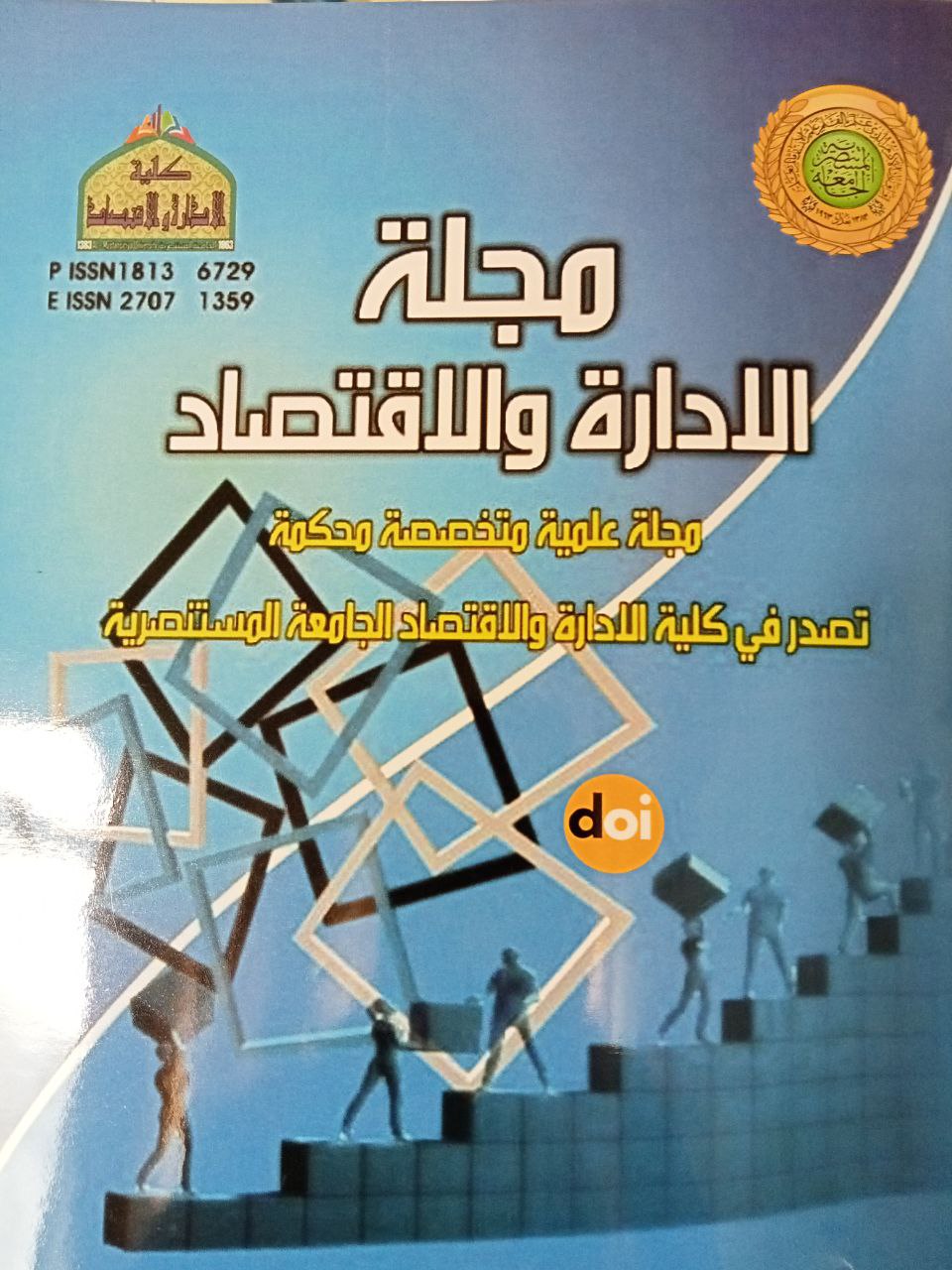The impact of financial stability indicators on the value of banking sector shares in the Iraqi Stock Exchange
DOI:
https://doi.org/10.31272/jae.i141.1000Keywords:
financial stability indicators - market value of the stock .Abstract
The research aims to study the impact of financial stability indicators on the value of the banking sector shares of the Iraq Stock Exchange, as financial stability indicators are a useful tool for examining the safety and health of the banking sector, as well as the performance of measuring the banking stability index consisting of four sub-indices (capital adequacy index, quality index Assets, liquidity index, profitability index), macroeconomic index, Ras market index, and financial cycle index for the period (2015_2020), and the banking sector of the Iraq Stock Exchange is represented in the research community, while the research sample was represented by (25) banks of the banking sector in the Iraq Stock Exchange Financial data was collected through the monthly and annual bulletins of the Iraq Stock Exchange and the reports of the Central Bank of Iraq and the Ministry of Planning, relying on some financial and statistical methods used to analyze the data such as (SPSS 24), (E Views V.9) and (Excel) programs, the simple linear regression equation, the multiple linear regression equation, the arithmetic mean, the standard deviation and the coefficient of variation. The research reached several results, the most important of which is that the banking sector index has the greatest impact on the increase in the percentage of the aggregate financial stability index, and there is no significant impact of the financial stability indicators on the market value. For stocks, the banking sector index also has no effect on the value of stocks, but the capital market index, the macroeconomic index, and the financial cycle index have an impact on the value of stocks, and also some sub-indices of the banking sector index have an impact on the value of stocks.
References
اولاُ : المصادر الانكليزية والعربية
Pastory, D., & Marobhe, M. (2015). The Determinants of the Commercial Banks Profitability in Tanzania: Panel Evidence.
Gautam, K. R. (2020). Financial Performance Analysis of Nepalese Financial Institutions in the Framework of CAMEL. Janapriya Journal of Interdisciplinary Studies, 9(1), 56-74
Mulualem, G. (2015). Analyzing financial performance of commercial banks in Ethiopia: CAMEL Approach (Doctoral dissertation, Addis Ababa University
Majumder, M., Hossain, T., & Rahman, M. M. (2017). A camel model analysis of selected banks in Bangladesh. Mohammed Mizanur, A CAMEL Model Analysis of Selected Banks in Bangladesh (November 9, 2017
Munteanu, I. (2011). The Crisis Effects on Bank Profitability Determinants: Evidence from Romania. Collection of Papers 2011–Volume I, 101.
Banday, U. J., & Aneja, R. (2019). Twin deficit hypothesis and reverse causality: a case study of China. Palgrave Communications, 5(1), 1-10
Saymeh, A. A. F., & Orabi, M. M. A. (2013). The effect of interest rate, inflation rate, GDP, on real economic growth rate in Jordan. Asian Economic and Financial Review, 3(3), 341-354.
NWAFOR, M. C. (2018). External reserves: Panacea for economic growth in Nigeria. International Journal of Business and Management, 9(33)
Drehmann, M., & Tsatsaronis, K. (2014). The credit-to-GDP gap and countercyclical capital buffers: questions and answers. BIS Quarterly Review March.
هنادي صكر مكطوف, & سرى ضيغم حازم. (2020). تقييم الاداء المصرفي على وفق نموذج CAMELS دراسة تطبيقية لمصرف المنصور للاستثمار للفترة من (2014–2018). Journal of Economics and Administrative Sciences, 26(117), 179-199.
Sathyamoorthi, C. R., Mapharing, M., Ndzinge, S., Tobedza, G., & Wally-Dima, L. (2017). Performance evaluation of listed commercial banks in Botswana: The Camel model. Archives of Business Research, 5(10).
Mwaanga, O., & Adeosun, K. (2017). Decolonisation in practice: A case study of the kicking AIDS out, programme development Jamaica. Journal of Sport for Development, 5(9), 58-69.
Akter, A. (2017). Financial diagnosis using CAMEL model: public versus private banks in Bangladesh. American Journal of Trade and Policy, 4(1), 39-46.
زغود ، صرارمة وعبد الوحيد ، (2015) ، الإنذار المبكر بإستخدام نموذج Camels لتقييم أداء البنوك التجارية.
Schinasi, Garry J. (2007). Seminar on Current Developments in Monetary and Financial Law Washington, D.C., October 23-27, 2006, JEL Classification Numbers: E60, G00
Herrero, A. G., & Del Rio, P. (2004). Financial stability and the design of monetary policy. In Financial Markets in Central and Eastern Europe (pp. 357-391). Routledge.
Ross, Stephen A, Westerfield, Randolph W. Jordan, Bradford D(2019)CORPORATE FINANCE: CORE PRINCIPLES & APPLICATIONS, twelfth EDITION, Published by McGraw-Hill Education.
Brealey, R. A., Myers, S. C., Allen, F., & Mohanty, P. (2018). Principles Of Corporate Finance, 12/E (Vol. 12). Mcgraw-Hill Education
حسين ، وليد حسين وحافظ ، عبد الناصر علك ، (2011)، استخدام أسعار الأسهم العادية في قياس كفاءة الإدارة المالية في عينة من الشركات العراقية ، مجلة دراسات محاسبية ومالية ، 6(17).


